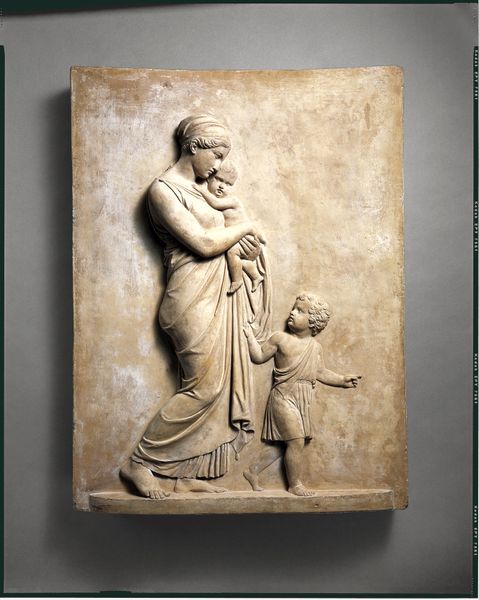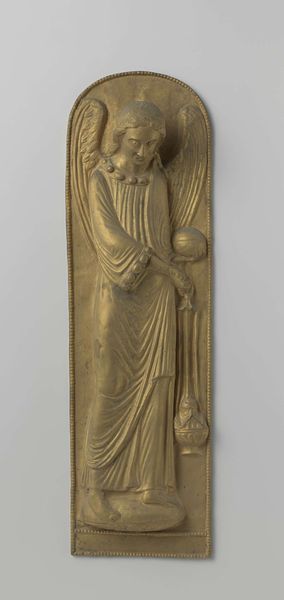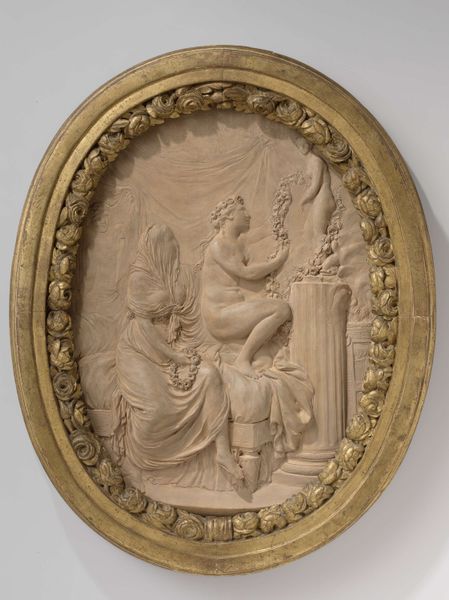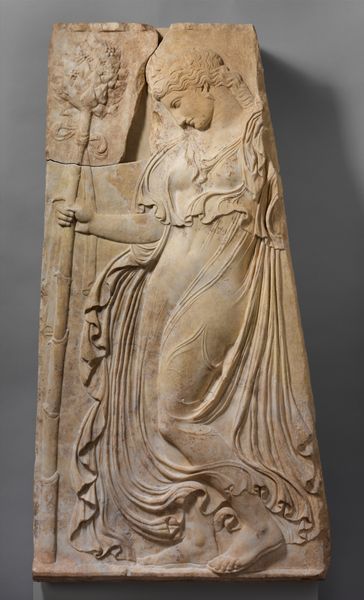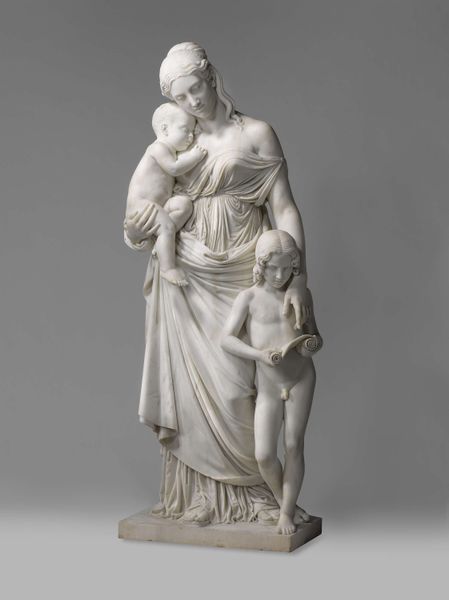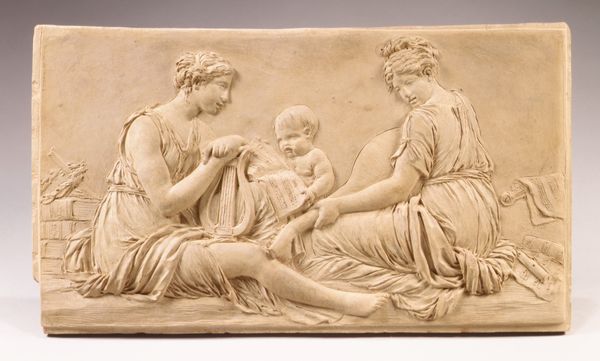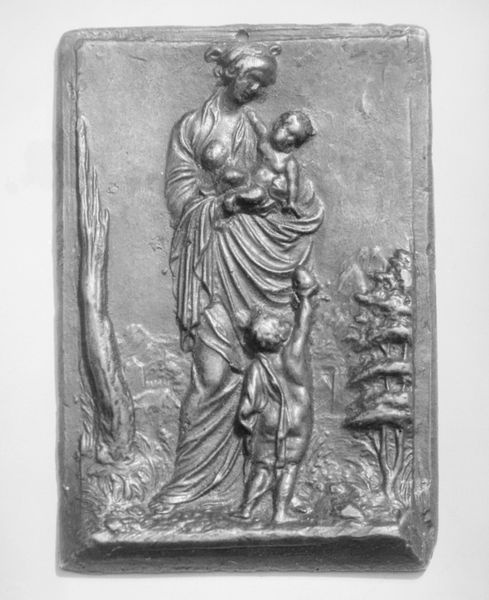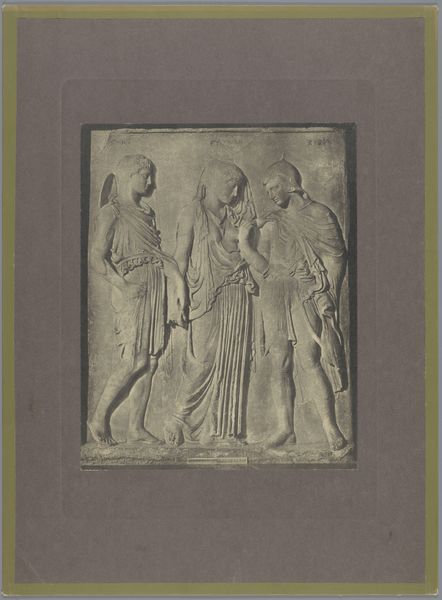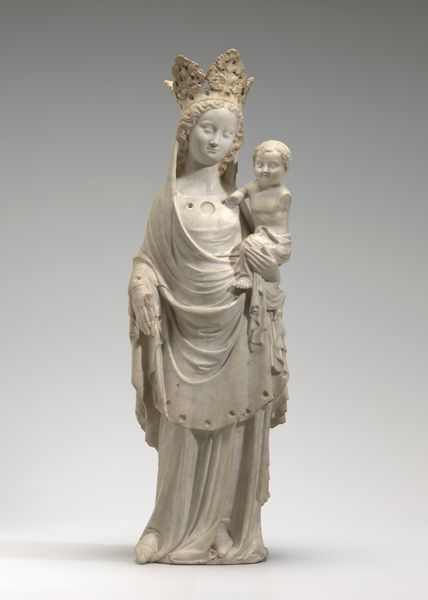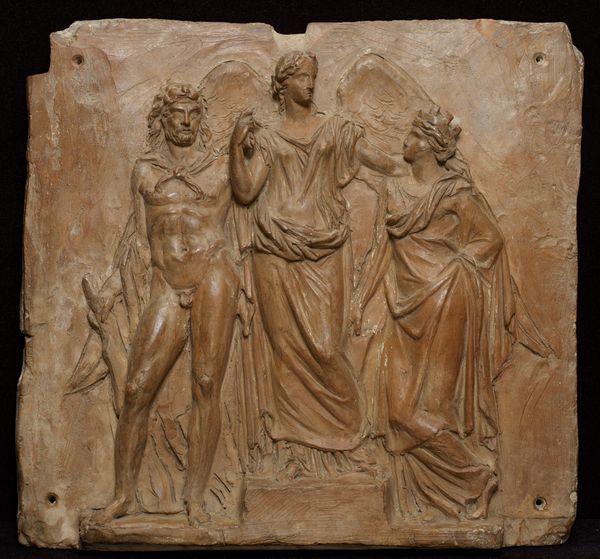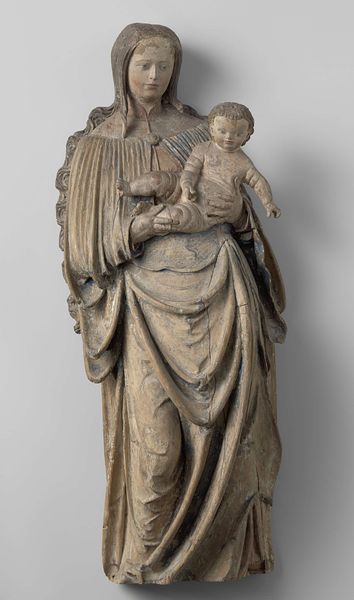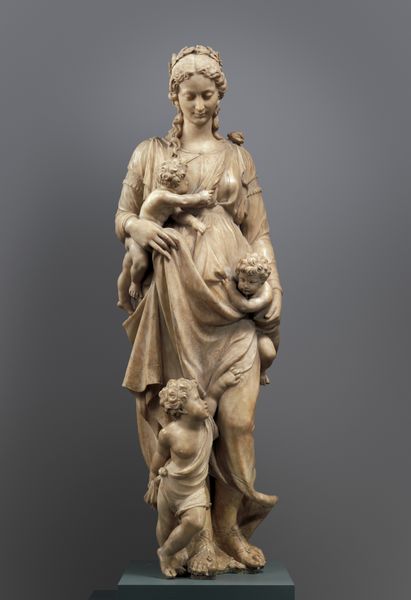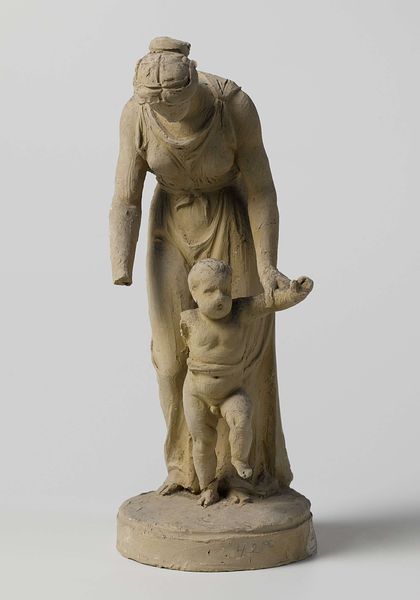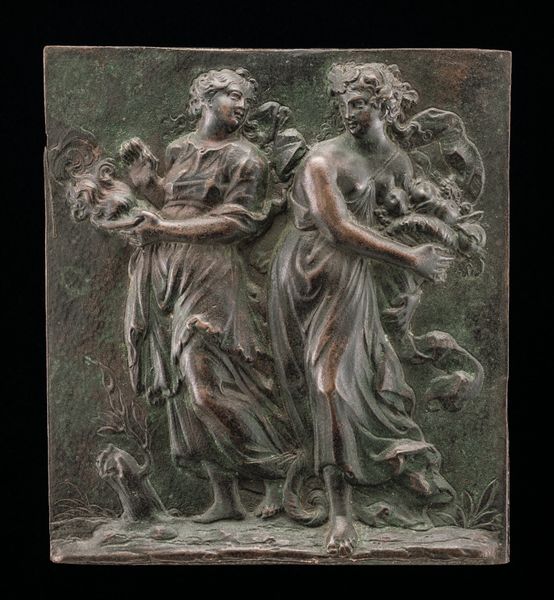
Minerva Protecting the Young King of Rome 1811
0:00
0:00
carving, relief, sculpture, marble
#
neoclacissism
#
carving
#
sculpture
#
relief
#
classical-realism
#
figuration
#
sculpture
#
history-painting
#
decorative-art
#
marble
Dimensions: 45 1/2 × 29 in. (115.6 × 73.7 cm)
Copyright: Public Domain
Curator: At the Metropolitan Museum of Art, we have "Minerva Protecting the Young King of Rome," a marble relief created in 1811 by Joseph-Antoine Romagnési. The piece presents Minerva, the Roman goddess of wisdom and strategic warfare, standing protectively over the young king. What strikes you upon viewing it? Editor: My initial reaction is that it is so self-consciously staged, an attempt to root power in ancient virtues. It seems calculated, almost cold, despite the intimacy of the scene. The figures appear like marble actors assuming poses rather than existing in relationship. Curator: I see your point. Neoclassical art, after all, was frequently used to project power, wasn’t it? But let's consider the symbolic language: Minerva embodies wisdom and warfare, offering not just protection but a path, which is represented in the wreath in her other hand.. Notice the inclusion of the wolf, which has a powerful presence in roman mythology - do you see how it grounds the message to Roman origins? Editor: Yes, the symbolism is overt and insistent. The wolf is a blatant reference to the myth of Romulus and Remus, reinforcing the king’s destined authority. But that's exactly where my ambivalence comes from. By so rigidly linking the young king to such heavily laden symbols, is Romagnési aiming for timeless grandeur, or anxiously legitimizing a fragile regime through forced visual association? Curator: It’s a balancing act, definitely, between timeless idealization and contemporary propaganda. This piece was produced during the height of Napoleon’s reign. It presents the young king, Napoleon’s son, as divinely ordained and guided by wisdom and strength. The choice to portray him with the emblems of Roman mythology gives him legitimacy - and an element of cultural depth to Napoleonic ambitions. Editor: A visual echo chamber, designed to amplify the emperor’s claims through historical validation. That wolf, while undeniably evocative, also feels like a very convenient plot device in this context. And I am still wondering who this piece was designed to appeal to, since most could not have personal contact with it. Curator: Art always operates within a network of social and political contexts, particularly when it is attached to historical figures. That dynamic tension – between aesthetic and function - is what makes art like this fascinating to study, centuries later. We begin to see not just an artistic object, but also cultural artifact. Editor: Absolutely. “Minerva Protecting the Young King of Rome" invites us to look at how art, even in its most seemingly serene and idealized form, participates in a wider discussion of governance, legitimacy, and historical destiny. And who would not want Minerva at your side?
Comments
No comments
Be the first to comment and join the conversation on the ultimate creative platform.
